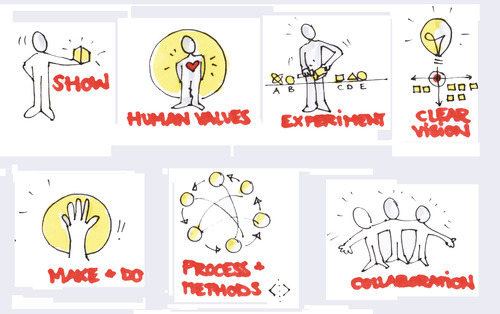Benefit N°one: Designers bring the right mindset to the table
Innovation comes along with uncertainty, there's no clear script to follow. It's a black box out in the future that needs to be defined, envisioned, analyzed, synthesized, iterated, tested and finally launched. You need the appropriate mindset to embrace uncertainty in the midst of the work and to avoid overly simplifying the creative process, which is crucial to every innovation process, in order to stay within the comfort zone. Because the function of design is to create for the future, designers are used to starting from scratch by connecting disparate dots, embracing the vagueness of information and managing ambiguity. Of course, the process of innovating is not a individual endeavor, but a collaborative team effort.

At the d.school, a "hub for innovators at Stanford", students and faculty from diverse fields (engineering, medicine, business, law, the humanities, sciences, education) use a methodology for innovation that combines creative and analytical approaches. Human values are at the heart of the collaborative approach, which has been called design thinking. Design Thinking draws on methods from engineering and design, and combines them with ideas from the arts, along with tools from the social sciences, and insights from the business world.
The d.school "bootcamp bootleg" suggests the following mindset for innovators:
- show, don't tell - be visual, create experience and tell great stories
- focus on human values - develop empathy for the people you design for and get feedback
- embrace experimentation - build prototypes to think and learn, to take your idea to the next level
- craft clarity - create a coherent vision out of messy problems framed to inspire and to fuel ideation
- bias towards action - it is about make + do over think + meet
- be mindful of process - know where you are, what method to use and why it makes sense
- radical collaboration - bring together people with various backgrounds and viewpoints
It is important for design professionals to avoid building design silos while their business and engineering counterparts are slowly starting to tear their silos down. Designers with open minds are great team players in the game of innovation and moreover, their creative and inspiring mindset can be contagious!
- Created on .